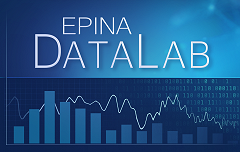
 Epina DataLab Epina DataLab Features Features Help & Support Help & Support Research done with DataLab Research done with DataLab Download Download Data Repository Data Repository Release History Release History Latest Changes Latest Changes Purchase Purchase |
Features
The following list shows you the most important features of Epina DataLab:
Data Processing
- various methods to import and export data
- support of nominal, ordinal and interval measurement scales
- built-in numerical data editor
- name generator
- sorting and mixing of data
- support of missing data
- matrix clipboard allows flexible reorganisation of data
- curve digitizer allows to convert printed diagrams into digital data
- automation of the analysis by programmability
Math and Statistics
- a built-in math calculator can be used to transform the measured data
- univariate descriptors and frequency tables
- a rich set of options for scaling the data
- statistical tests (t-test, ANOVA, F-test, Kolmogorov-Smirnov, Dean-Dixon, correlation test, etc.)
- linear regression (straight line, polynomial, hyperbola, logarithmic, etc.)
- cross correlation table
- multiple linear regression
- selection of variables
- detection of multicollinearities
- ridge regression
- principal component analysis (PCA)
- principal component regression (PCR)
- partial least squares regression (PLS)
- linear discriminant analysis (LDA)
- PLS discriminant analysis (PLS-DA)
- random forests
- self organizing map (SOM, Kohonen map)
- KNN modelling (memory based learner)
- hierarchical clustering (dendrograms)
- kMeans and fuzzy cMeans clustering
- random number generator with configurable distribution of random numbers
- Fast Fourier Transformation
- filter and smoothing
- time series visualization and analysis
Visualisation of Data
- displayed windows are freely configurable in size and colors
- a large number of chart types: point plots, line plots, spectra, x-y plots, contour lines, principal components, histograms, Pareto charts, table survey, etc.
- scatter plots allow to recognize relationships among variables
- color maps to visualize three-dimensional relationships
- data can be labeled by additional class information
- zoom and pan of data
- the axes and the titles of the graphs as well as single data items can be labeled almost arbitrarily
- on-screen 3D-rotation of data
Varia
- update function to obtain free updates automatically
- Scriptsprache (DLabPascal) zur Automatisierung von Analysen
- control of DataLab features by external programs
- each data set can be accompanied by an HTML based comment of any length